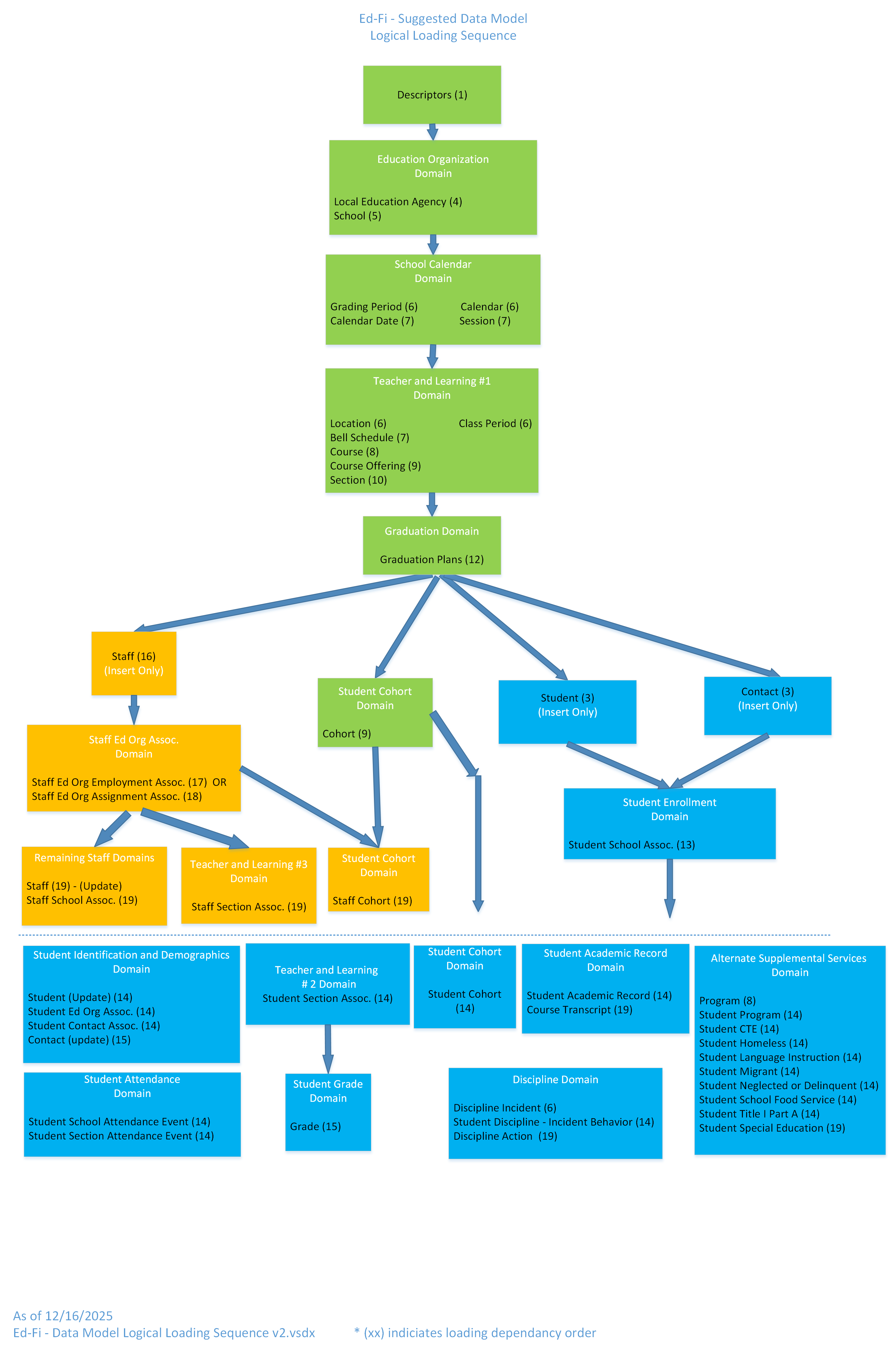Student Information Systems API v5 Certification - Test Scenarios
Test Scenarios
Local Descriptor Guidance
The Alliance recommendation is to source descriptor values from the list governed by the project’s reporting context and place them in a namespace that accurately captures that governing organization. Descriptor values shown in the certification’s test scenarios use the Ed-Fi namespace for informational purposes. Descriptor namespace should clearly indicate the organization that governs the value.
Transactional Test Cases
The certifying product is required to demonstrate the ability to perform all of the test cases for API resources listed below under Required API Resources.
"Transactionally" means that API resource transactions / synchronization MUST occur as changes are made during normal product usage. It is acceptable for product to batch updates, but such batches MUST occur such that changes are near-real time. See Testing Requirements for more information.
Batch Test Cases
Batch testing is intended to validate the ability of a system to perform an initial synchronization with the API, rather than perform transactional management. In field work, it is common for an agency or vendor to implement an API surface during the school year when a lot of data already exists in the system, and SIS systems must then synchronize existing data. This test validates a product's ability to perform such an operation.
The system must demonstrate the ability to synchronize the state of the system as a batch operation, by using the API resources in the chart below. The batch test only tests the creation of API resources, and does not include update or delete operations.
Error Handling
The API client MUST be able to perform the following actions:
-
Capture and log transport errors, including all applicable HTTP errors.
-
Demonstrate the capability for re-delivery of API resources updates following failed transmissions. This re-delivery does not have to be immediate and it can require user intervention (e.g., surface an error to a user and ask the user if they want to retry).
-
In the event that repeated delivery fails for the same resource update, surface error reports to a system user.
Field work within the Ed-Fi community has revealed that this application behavior is a necessary condition of system interoperability.
Accordingly, the test scenarios may include situations in which an API resource (or resources) will be made unavailable to the client, or in which the API reports other errors due to resource availability (e.g., HTTP 500 error). The client is expected to be able to handle successfully such situations.
Performance and Optimization
API clients should minimize API transactions and reduce network traffic.
This set of best practices will help to ensure scalability of API hosts by focusing on efficiency of integrations. They will minimize unnecessary data transfers, data churn, and network overhead and thereby also reduce costs. Since API implementation can be shared resources, these can also reduce overall latency time or similar complications for the entire vendor community transacting with the API.
Certification will test for the product's ability to perform targeted syncs and use a multi-threading strategy for API transaction management. Updates should only be made to targeted elements and not sync unaffected resources. This requirement will minimize unnecessary data transfers, data churn and network overhead. The system should be able to perform the following during scenario testing:
- Resync single records that have previously failed.
- Resync by single API resource (e.g., all sections, all staff)
- Select and resync a smaller subset of API resources (e.g., by time period, by resource, etc.)
In addition, the system’s primary behavior should be to update records in place using POST/PUT rather than DELETE/POST.
Enumeration Configuration
The API client MUST demonstrate the ability to download descriptors from the API and allow mapping of local enumeration values (code sets) to those descriptors. This capability MUST exist in order to allow a API host to customize code sets/values, and it MUST exist for all descriptors included across all resources in the API.
Required API Resources
For each API resource field, the test cases and the required/optional status of each field is provided in a tabular form, along with the sample data to be used in testing. Use of the sample data is RECOMMENDED; other data MAY be used, but the data MUST NOT be real or even derived from real data.
For each API resource element, the requirement status is marked as follows:
-
REQUIRED: the element must be supplied. Note that the Requirements - Testing Requirements lists permitted workarounds for many cases where the element may be missing in the source system.
-
CONDITIONAL: the element is required IF AND ONLY IF a standard installation of the product has this element. Providers not providing these elements will be required to submit proof that these elements are not present by default in their systems.
-
OPTIONAL: these elements are optional.
Note that for some test cases additional data requirements are listed. This is the case (for example) in some places where there are multiple common ways that the same data concept is modeled.
** A Student must be associated with a School via StudentSchoolAssociation before a student record may be updated.
Ed-Fi API Dependency Graph:

Use the links below to view the diagram in a different format.
[ PDF Version | Vizio format ]